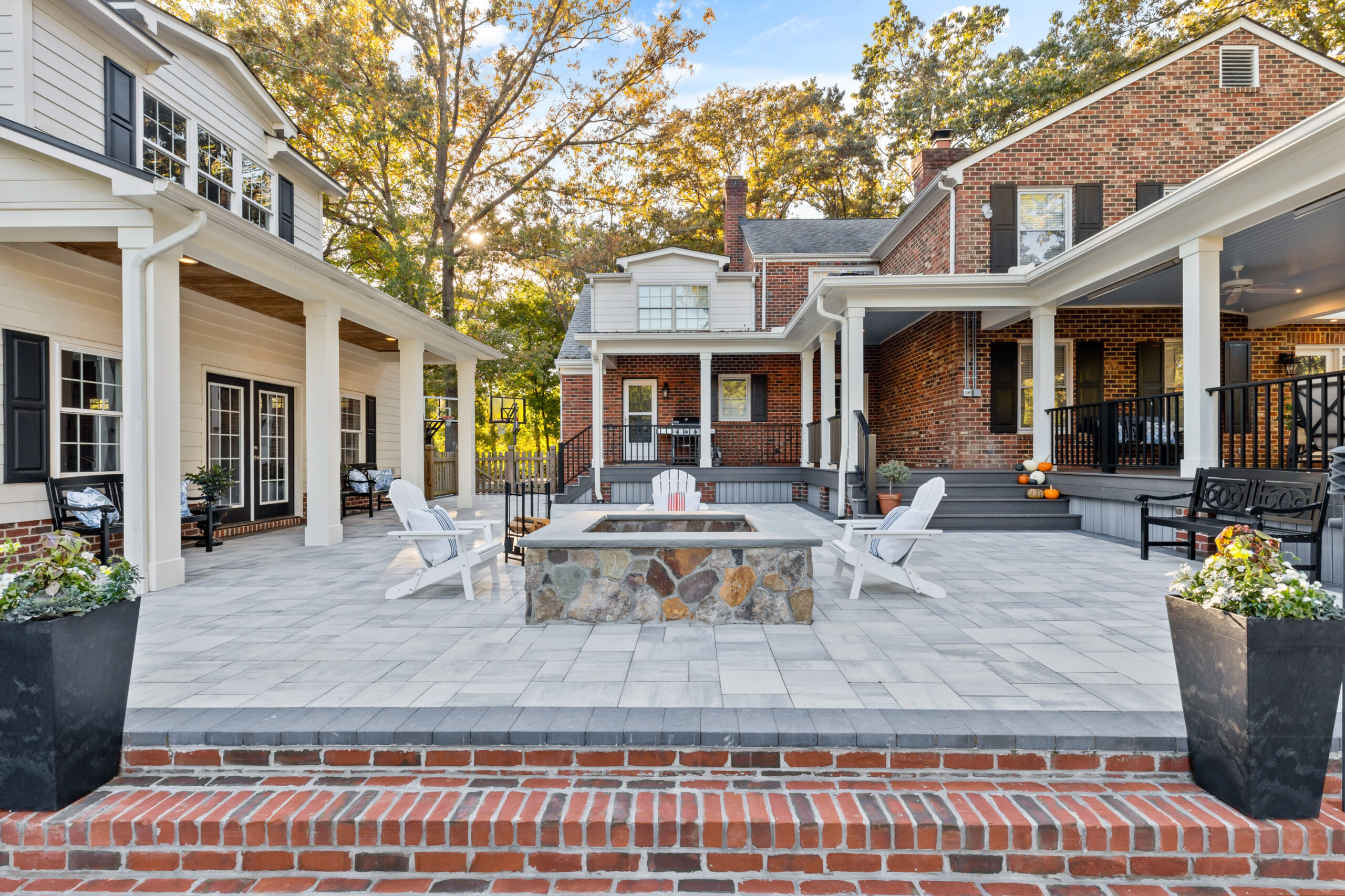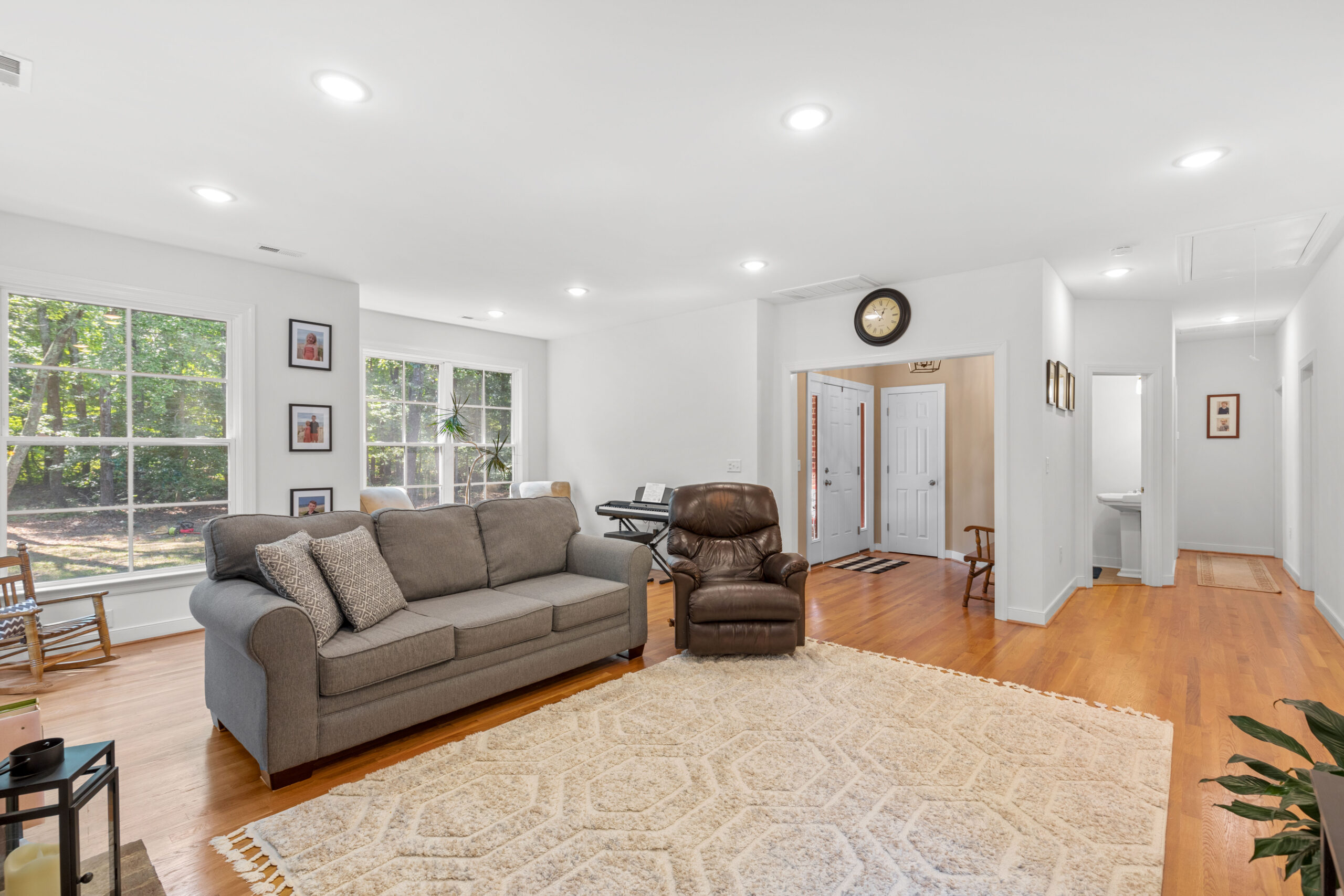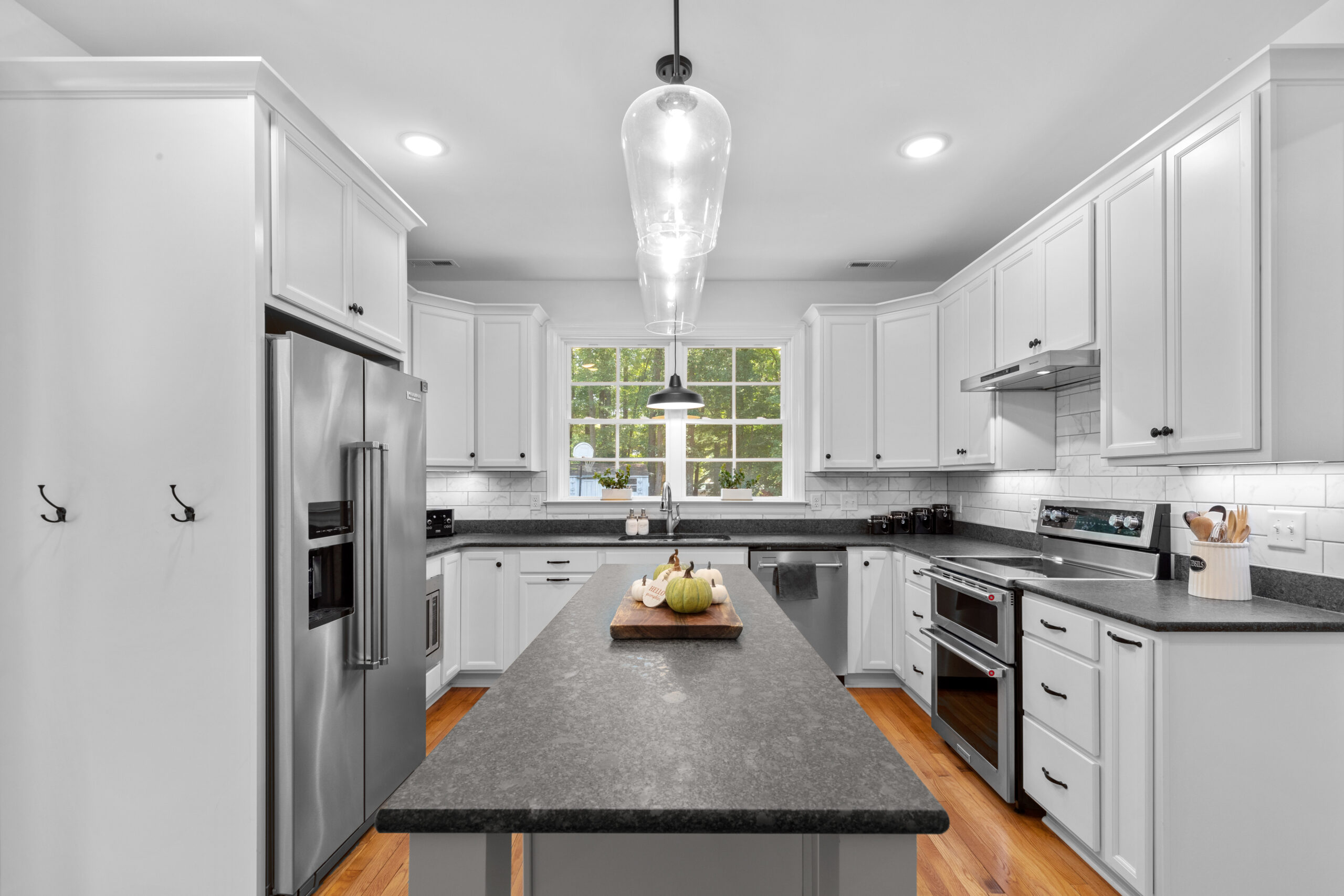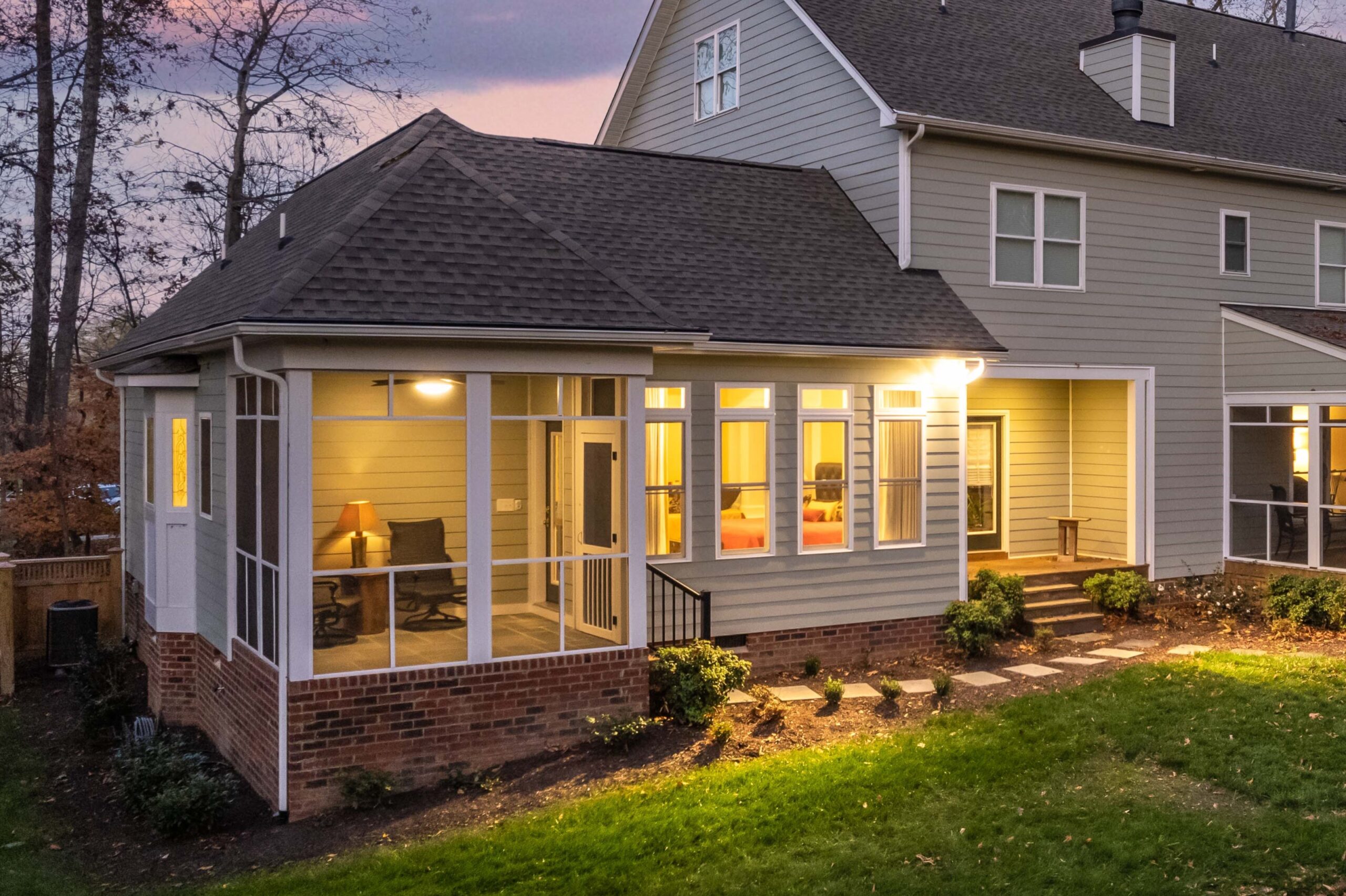Outdoor living is no longer a seasonal trend—it’s a core part of how people live at home. Porches, patios, pool houses, and outdoor kitchens expand the usable space of a home and enhance both its function and feel. But good outdoor design takes more than just furniture and pavers.
Connect Outdoor and Indoor Living
Access is key. Outdoor spaces work best when they relate directly to kitchens, family rooms, or primary bedrooms. Large sliding doors, matching flooring transitions, and overhead cover can visually and physically extend your home.
Create Zones: Dining, Lounging, and Cooking
Just like indoors, outdoor areas benefit from spatial organization. A dining area near the grill, a lounge zone near a fireplace, or a shaded reading nook under a pergola—each needs to feel distinct but cohesive.
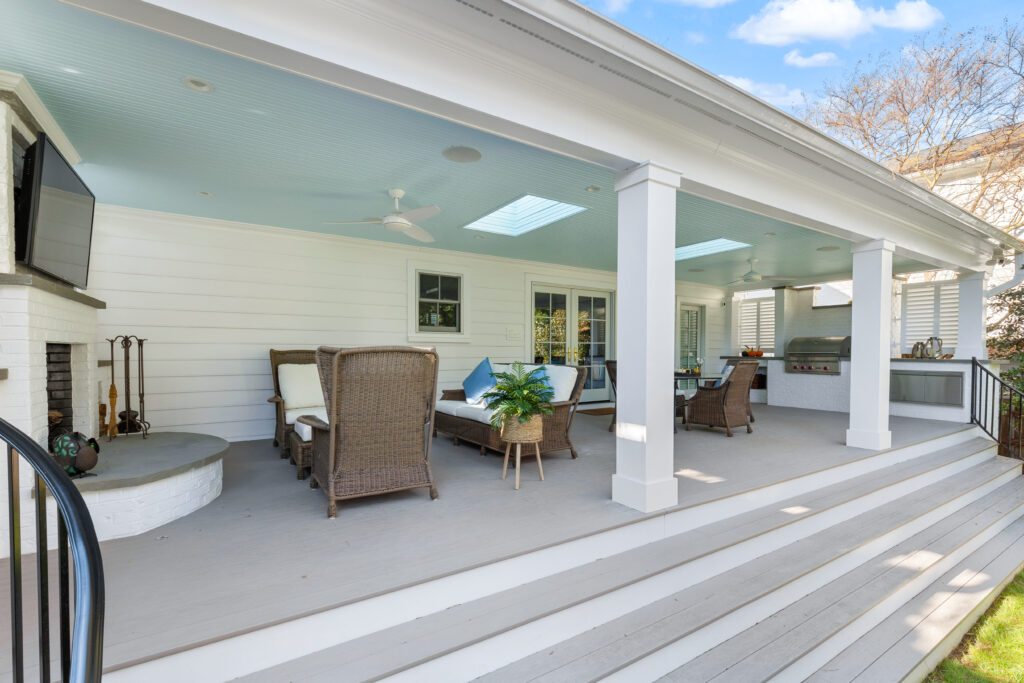
Choose Durable Materials
Weather, UV, and temperature extremes require materials that last. We often use composite decking, porcelain pavers, natural stone, and exterior-grade cabinetry and lighting. Select finishes that resist fading, mold, and wear.
Think Seasonally
Add outdoor heaters, ceiling fans, and lighting so the space can be used more than just a few months per year. Shade structures, screens, and plantings can block wind and sun.
Common Mistakes to Avoid
- Forgetting storage (cushions, tools, supplies)
- Ignoring lighting (evening use matters)
- Choosing interior materials that won’t hold up outside
Outdoor Spaces Add Real Value
When well-designed, outdoor living areas increase resale appeal, enhance daily life, and help homeowners feel more connected to their property. Plan with intention, and the space will work hard for years to come.


